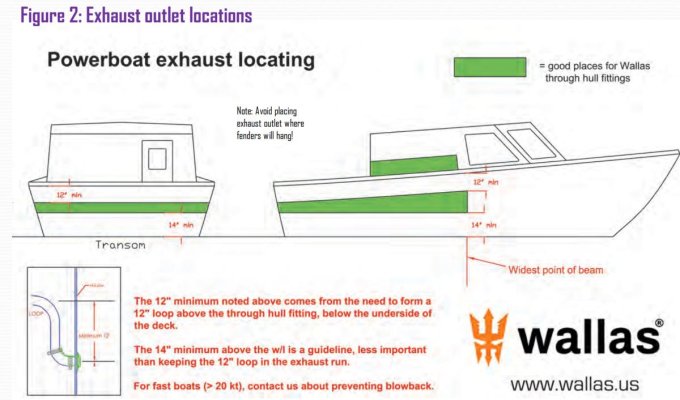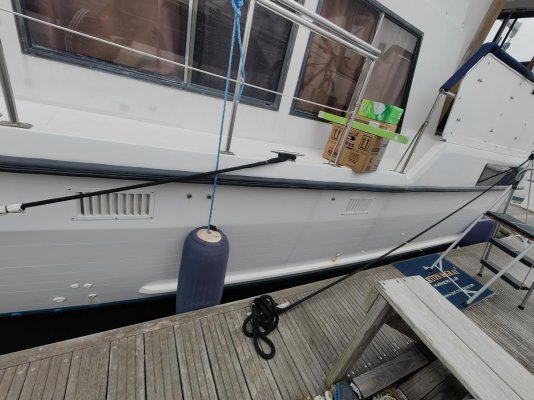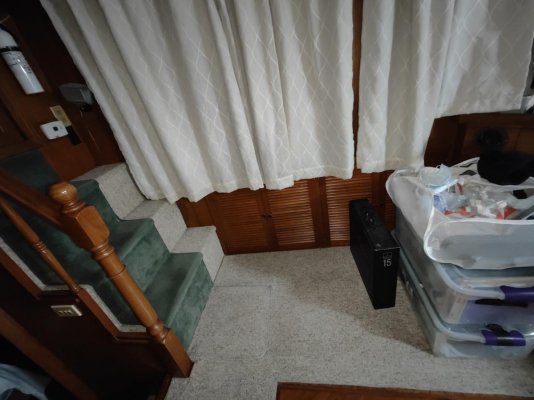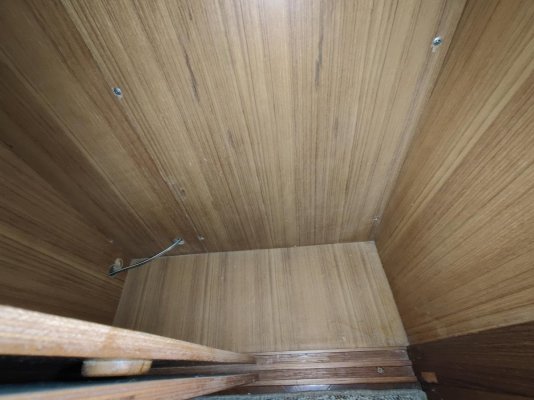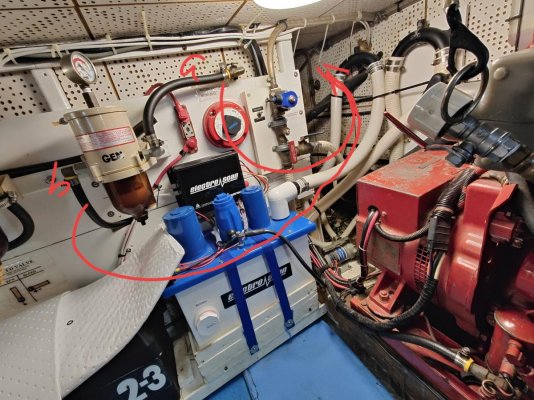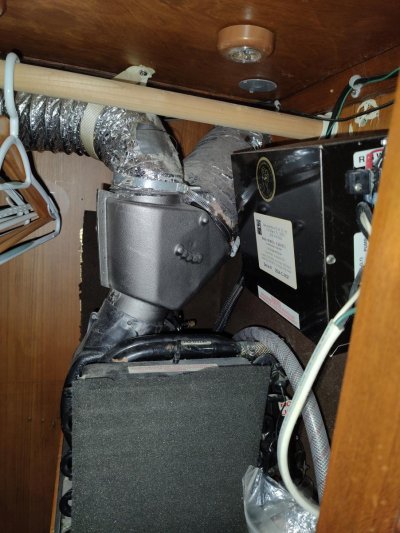My boat had a Wallas diesel heater. When that needed parts that were no longer available, I went with a $150 Chinese diesel heater (3 years ago). Some of the old ducting I used, some I improved. The Wallas had a fresh air intake to the outside. I eliminated that and now simply take air from my well ventilated engine room.
I added both a muffler and an intake silencer. The original install made for a whining noise outside the hull. More irritating to a neighbor than to me, less irritating than a generator, but still something easy to eliminate. I fabricated a muffler (as the common diesel heater mufflers are not suitable for interior spaces) similar to a "glass pack" muffler out of common copper pipe (
shown in this thread at post 37). Wallas makes an exhaust muffler out of $tainless $teel for about $300. My silencer on the air intake is one from Ebay. Recommended as the intake whines almost as much as the exhaust. Both are now silent.
The little heater fuel pump is a tick type and could be heard when at anchor. I suspended the pump from the rubber fuel lines and wrapped the pump in pipe insulation (the brown "smurf tube" commonly sold at hardware stores). It now can't be heard in the cabin.
The air duct is not a common size and one is generally forced to buy small lengths. The air is quite hot (it melted one of my crocs on the cabin floor, also shown in the above thread at post 53). I would use the special heat-tolerant aluminized duct when near the heater. However, that duct is usually kind of an accordion pleat and therefore not that efficient for longer runs. Turns out that long runs and lots of elbows are what kills these little heaters as they can't "breathe" and coke up. That said, I needed to run one "Y" over 8 feet through the cold bilge to get to the V berth. I used 3" pipe insulation as the duct (the brown stuff, again) to keep the air warm. Worked fine and can apparently take more heat than a pair of crocs.

